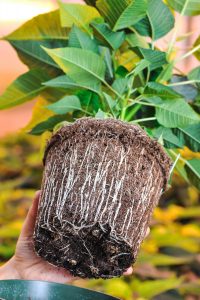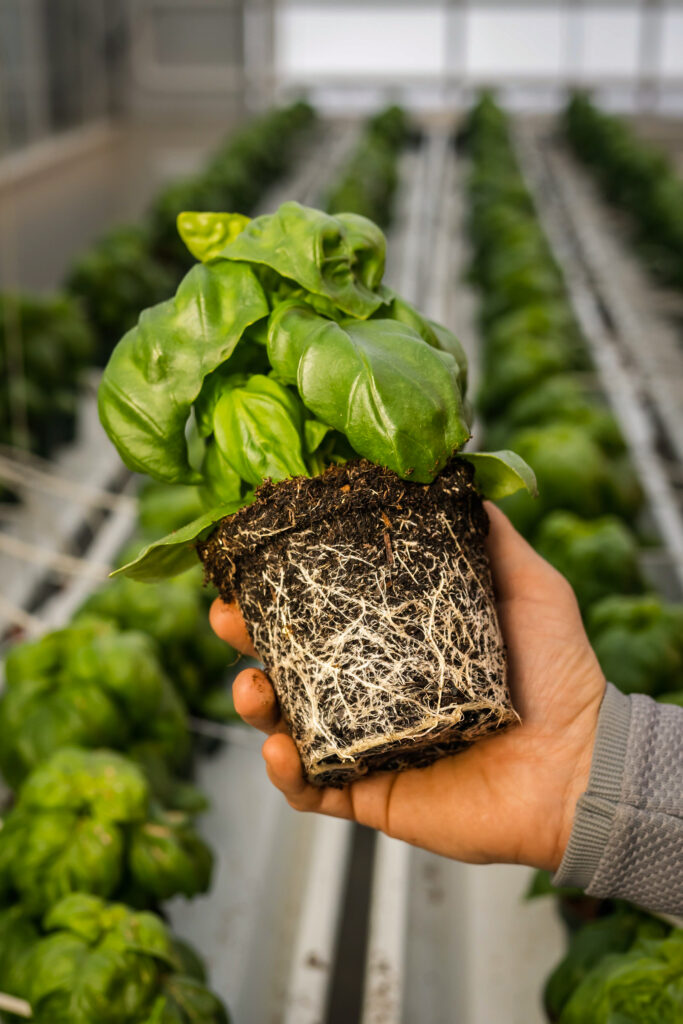Poinsettia Cultivation – Phase 4
By Brian Cantin, Senior Grower Advisor
As we approach the month of December, hopefully everything we have done up to this time has prepared the poinsettia for the final stage of its growth cycle. Bract development is near completion, the root system is healthy and well established, and the size, tone and colour of the leaves have been optimized by a sound fertilization program. The ideal growing conditions associated with rapid leaf unfolding, good leaf expansion, extensive root development and efficient nutrient uptake are gradually phased out as winter approaches. Any hopes of sizing up undersized plants are diminishing quickly as temperatures continue to drop and daylight continues to weaken in the north. Any attempt to optimize growth near the end of the crop by providing additional heat or increasing the concentration of fertilizer can actually jeopardize post-harvest quality. From now on, everything we do should be directed towards preparing the poinsettias for the stress of shipping and the retail environment.
Fertilizer and irrigation practices should now be geared towards reducing the EC of the substrate which will lower the salt content to levels that are more conducive to post-harvest quality. A word of caution, however: stopping your feed program too early can lead to premature yellowing and dropping of the lower leaves in the retail setting. A safer approach is to gradually drop fertilizer levels to 80–100 N (nitrate based) for the last two to three weeks. This must be done with close monitoring of EC levels during this final period of growth before shipping. Many problems, like bract edge-burn and root loss, can be avoided by simply leaching out high salts and gradually reducing the fertilizer.
Moving onto climate control, the goal now is to tone and condition both the leaf canopy and the root environment to optimize survival during the shipping process and the harsher conditions of retail environments. As the cold season has progressed, the plants have filled in and the lack of space has created a thick, crowded leaf canopy. Keep the air dry and constantly circulating throughout the canopy as much as possible to reduce any humidity that would be conducive to disease outbreaks. As shipping begins, watering should be done on demand, based on the daily shipping routine, rather than on a fixed schedule. Keep a close eye on the condition of the roots, as they can be subject to overwatering during the shipping process. A saturated pot placed in a pot cover can definitely create a deleterious microclimate in a dark, sealed shipping box! Botrytis development on the bracts and cyathia during shipment can be a problem if latent infections are not controlled during production or if moisture condenses on the bracts prior to or during shipping. Just watch how fast condensation accumulates on the plastic sleeve when a poinsettia is left on a greenhouse bench in the afternoon sun. As for temperature control, if the crop is maturing too fast and lowering the temperature is warranted, make sure to continue to heat and vent the greenhouse sufficiently to eliminate high humidity and provide good air circulation.

On the other hand, if the timing of the crop is on schedule, lowering the temperature will help intensify bract colour, as many varieties have a tendency to fade if finished too warm.
–
Applications of Bonzi
I would be remiss if I neglected to mention applications of Bonzi late in the season. Unseasonably bright and warm weather can often create undesirable spurts of growth. In the past, growers have had varying results with late-season applications of Bonzi. I cannot overemphasize the importance of focusing on the amount of active ingredient applied per pot (mg of active ingredient /pot) rather than on the concentration (ppm) of the drench solution. At any given ppm level, the application of diffrent volumes will affect plant growth at different extents. Incorrect volume measurements can lead to uneven results. It also goes without saying that reading the label is essential in order to avoid applying Bonzi at the wrong time or under the wrong conditions, such as under dry or wet soil conditions.
Recording data
In conclusion, I have always been an advocate of good recordkeeping. Poinsettias are definitely a crop that benefits from recording valuable data. Records that monitor cultivar response, crop timing, fertilizer rates, response to PGRs and root health status are all valuable sources of information. Records of this type can be used to improve crop performance and scheduling of future crops. Without good recordkeeping, the grower may be doomed to repeat past mistakes.


